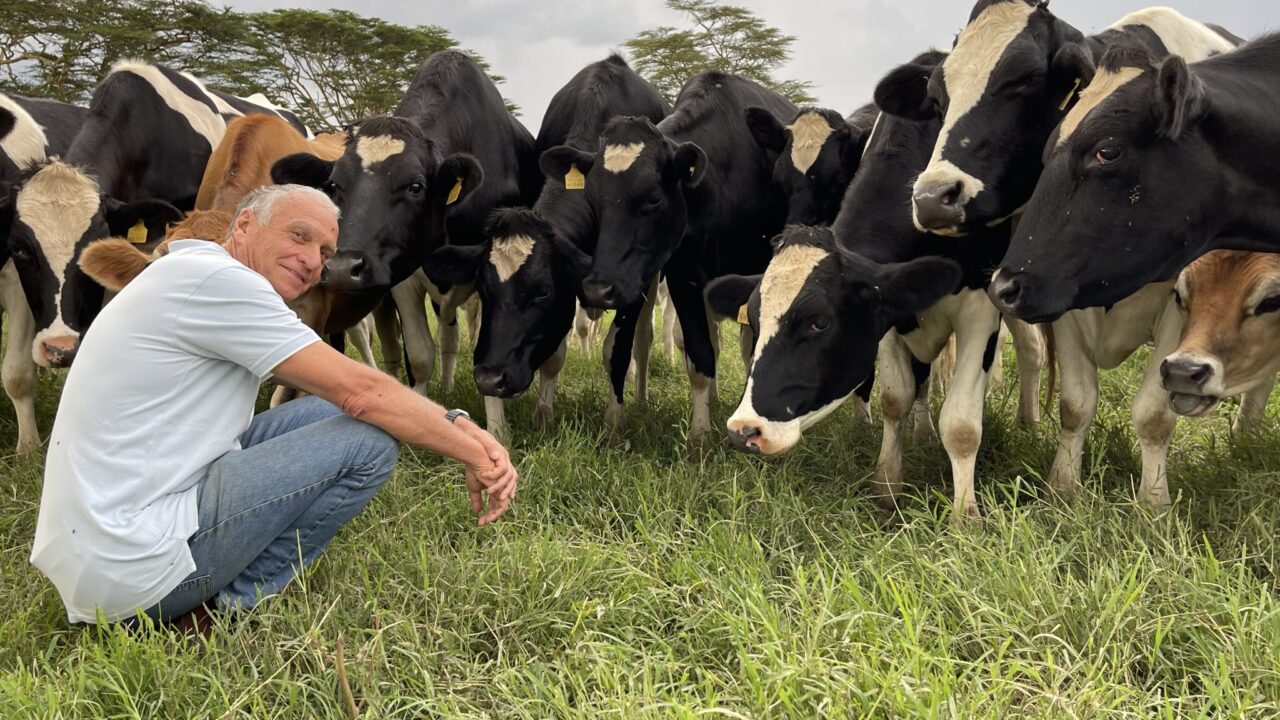While most dairy farmers strive to breed a cow that can produce a lot of high quality milk, it’s the animal’s survival traits that are more important to one Kenyan farmer.
Under his own unique business model, Hamish Grant at Gogar Farms Ltd., breeds heifers for farmers across east Africa, with emphasis on animals that can survive the harsh African conditions.
Gogar Farms Ltd. is based at Rongai, in the Rift Valley, and employs over 100 people. The farm is over 100 years in operation and extends to 1,600ha.
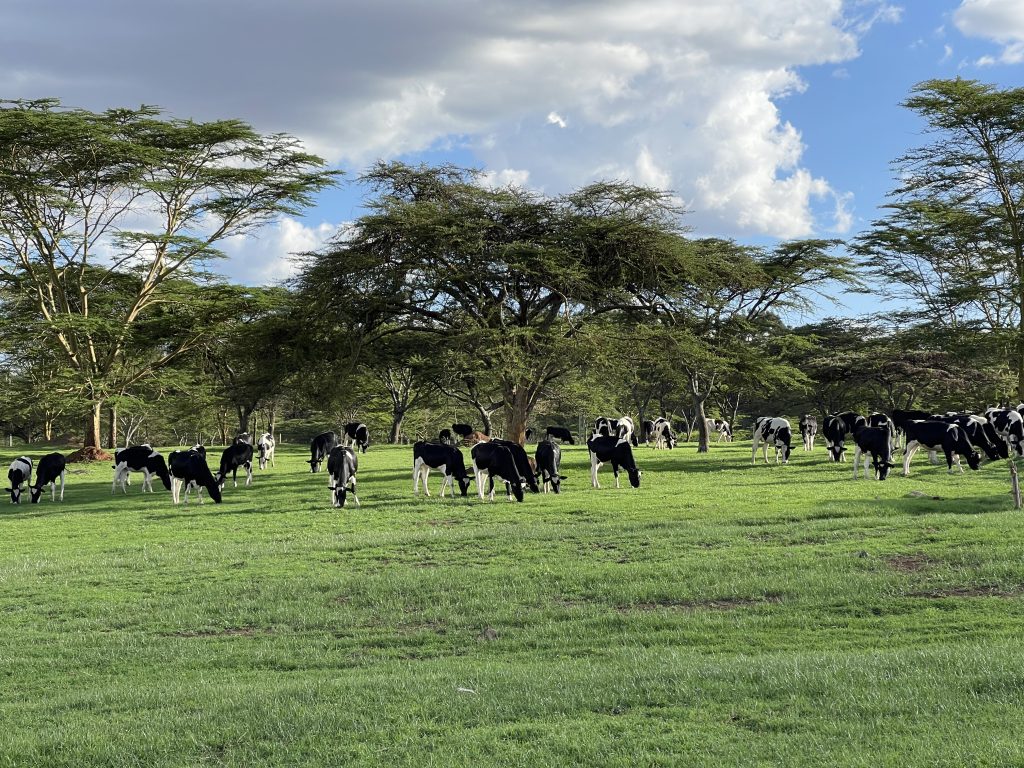
Hamish said: “Initially we ran Ayrshire cattle on the farm but since the mid-1990s we switched to Holstein Friesian which now makes up over 90% of the herd.
“Our primary business is breeding heifers to sell to customers across eastern Africa, meaning milk is more of a by-product for us.
“We normally run around 500 cows with a total herd count of over 1,400 animals, including heifer replacements and young stock.
“The cows are based outdoors all year long, and are milked outdoors using a mobile system with bucket milking. This unit is moved daily which increases our sustainability as we don’t have slurry to worry about,” he explained.
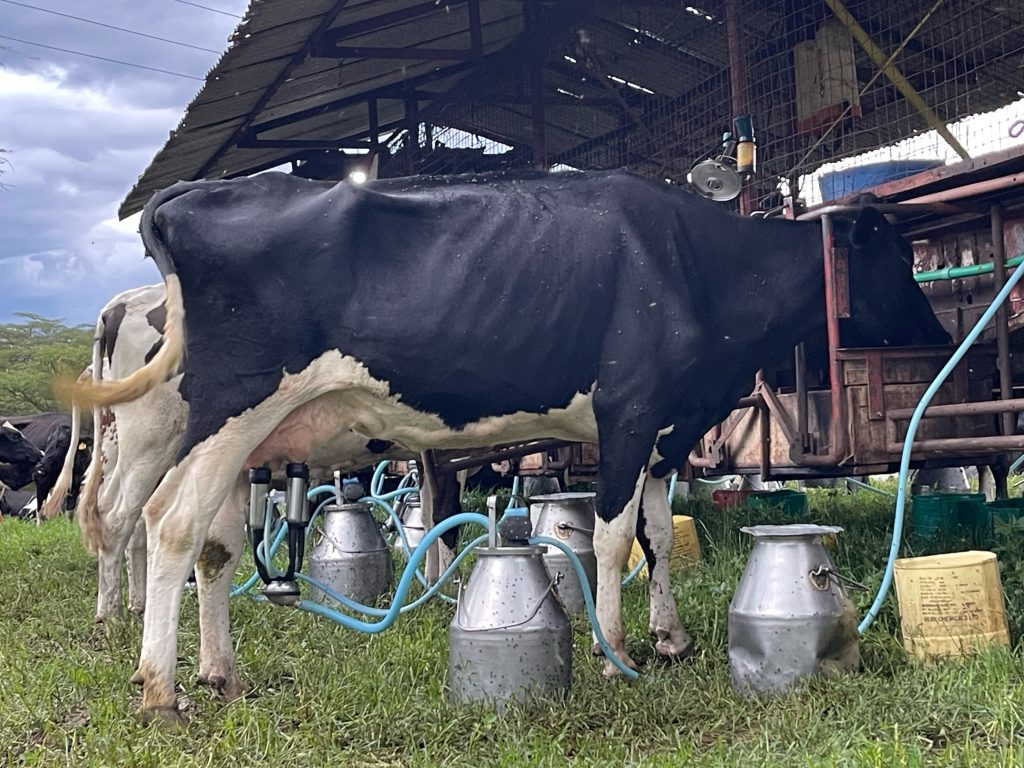
All the manure simply goes back into the field, which is also a pasture management tool as the dairy works similarly to an intensive grazing cell.
Milking outdoors
The outdoor milking system currently works very well for Hamish and his team as there is a river that snakes through the dairy grazing, making it difficult to round cows up to walk to a milking parlour.
However, this does come with its own set of challenges which has prompted Hamish to consider building a parlour and introducing a semi total mixed ration (TMR) in the next few years.
Hamish said: “In the past all our milking equipment was Fullwood, but we are now changing to the Bereket brand made in Turkey.
“There are eight stalls on each side of the mobile unit, with two staff milking and one assistant on each side. We run two teams for the morning and evening milkings.
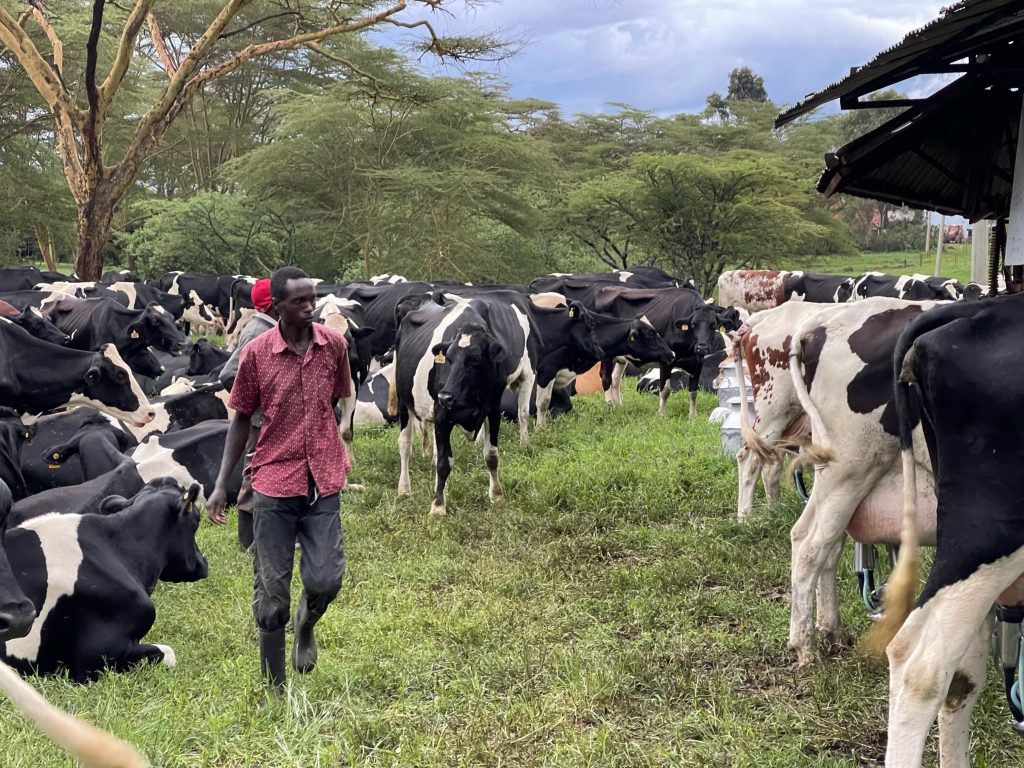
“Each team milks for about seven hours. The first team milks from 2:00a.m to 9:00a.m and the second team from 2:00p.m to 9:00p.m.”
The milk is sold to processor BioFoods Kenya for around £0.35/L to £0.40/L.
Genetics on the Kenyan farm
The cows are kept in two groups with around half in the first calvers group and the rest in the mature group of second lactation and older animals.
Under Hamish’s pasture-based system the cows eat as much grass as possible, but in the dry season he does buffer feed some silage via a 22m³ mixer which transports the feed to boxes in the fields.
Hamish said: “The main challenges we face here are tickborne diseases. We have to spray each cow every week through a spray race otherwise ticks proliferate and are vectors for Redwater, Anaplasmosis, and Theileriosis.
“Despite inoculation three times each year, we still catch foot and mouth disease every few years.
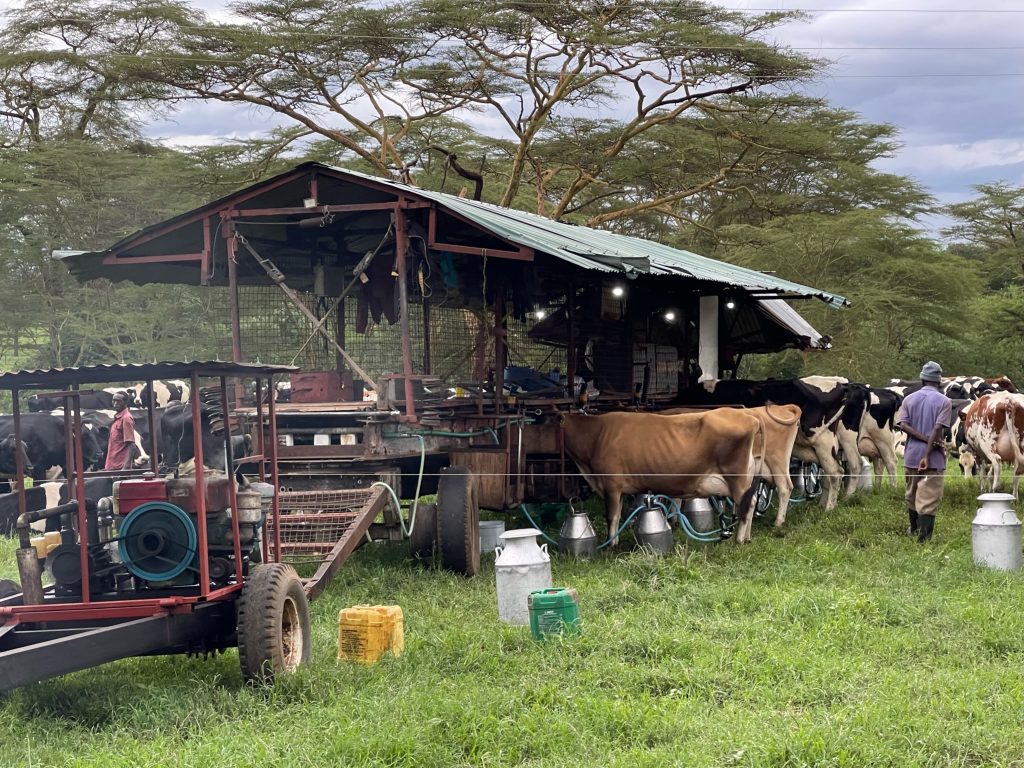
“Our yields are around 18-20L per cow per day. However, milk is a by-product for us as I am more interested in the genetics than the yield because we run a dairy system that will never express the true genetic capability of the cows.
“That is why we use genomics to give a better idea of their true potential. Farmers who manage intensively commonly get twice as much milk from our cows as we do when we sell them,” he added.
Typically, the farm sells cows after three or four lactations to other farmers where they achieve good prices because farmers like Gogar Farm’s genetics.
Hamish uses 100% sexed semen on the herd and the cows are dried off 60 days before calving.
